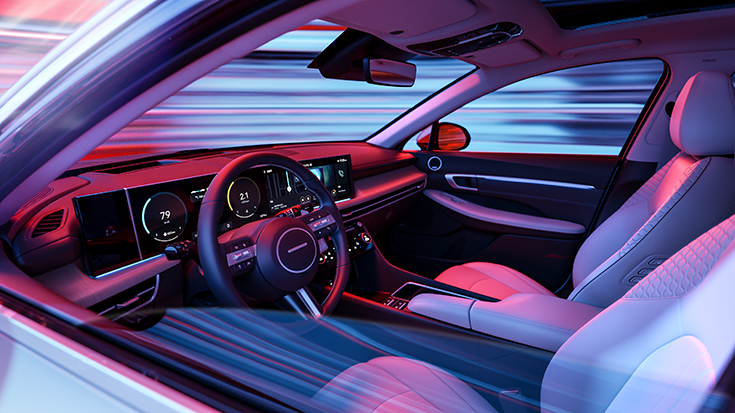In an effort to expand its customer reach to achieve greater traction in India’s fast-growing electric two-wheeler market, the Haryana-based Revolt Motors has opened 15 new dealerships. The 15 new dealerships are located at Raipur, Vapi, Bahadurgarh, Mumbai, Aurangabad, Bhubaneswar, Kota, Agra, Jhansi, Meerut, Surat, Dehradun, Ghaziabad and Faridabad. The new dealerships have begun taking… Continue reading Revolt Motors expands retail network to 50, targets 150 by June 2023
Category: US Motoring Press
Under the skin: How much recycled material can new cars use?
Back in the dark ages (that’s the real dark ages, not a couple of decades ago), alchemists sweated over the transmutation of base metals into gold. It was a nice idea, even though achieving their goal would have inevitably rendered the yellow stuff of little more value than the base metal they were making it… Continue reading Under the skin: How much recycled material can new cars use?
Electric Mercedes CLA to rival Tesla Model 3 from 2025
“It is an all-new engine engineered for Euro 7 emission regulations,” said Markus Schäfer, head of R&D at Mercedes-Benz. This petrol unit is thought to retain elements of the M254 powerplant used by a wide range of existing Mercedes-Benz models. Autocar can confirm it will be offered exclusively in mild-hybrid form with a 48V electric… Continue reading Electric Mercedes CLA to rival Tesla Model 3 from 2025
Hyundai reveals new Sonata with bold sporty look
Hyundai Motor Company today revealed new, eighth-generation Sonata midsize sedan with a bold new look that heralds its sportiest design ever More than just a simple facelift, the new Sonata is reborn as a dynamic, progressive new model with low-slung, elegant proportions, more aggressive styling and future-oriented technology. It is also a fresh take on the… Continue reading Hyundai reveals new Sonata with bold sporty look
‘You have to deliver:’ Fain faces tall order as he takes over UAW presidency
This content is only available to subscribers. Get unlimited digital access. $1 for 3 Months. Subscribe Now Your subscription supports: Unlimited access to subscriber only articles on desktop, tablet and mobile web. The eNewspaper, a digital replica of the print paper, every day. Trusted, up-to-date local Detroit and Michigan breaking news. Newsletters on topics that… Continue reading ‘You have to deliver:’ Fain faces tall order as he takes over UAW presidency
Fain wins historic UAW presidential race, will be sworn in Sunday
United Auto Workers presidential candidate Shawn Fain has defeated incumbent Ray Curry in a historic, first-ever direct election for the union’s highest office, the federal monitor overseeing the vote confirmed Saturday afternoon. Fain will be sworn in on Sunday according to the monitor, clearing the way for him to lead the UAW’s critical bargaining convention… Continue reading Fain wins historic UAW presidential race, will be sworn in Sunday
Germany, EU reach agreement in combustion engine row
Berlin – Germany and the European Union announced Saturday that they have reached an agreement in their dispute over the future of cars with combustion engines, allowing the registration of new vehicles with such engines even after 2035 provided they use climate-neutral fuel only. EU Commission Vice-President Frans Timmermans tweeted that “we have found an… Continue reading Germany, EU reach agreement in combustion engine row
What it means for UAW contract talks when automakers limit inventory
This content is only available to subscribers. Get unlimited digital access. $1 for 3 Months. Subscribe Now Your subscription supports: Unlimited access to subscriber only articles on desktop, tablet and mobile web. The eNewspaper, a digital replica of the print paper, every day. Trusted, up-to-date local Detroit and Michigan breaking news. Newsletters on topics that… Continue reading What it means for UAW contract talks when automakers limit inventory
UAW presidential race might finally be called on Saturday
Saturday might be the day when members of the United Auto Workers finally know who will lead the Detroit-based union through potentially one of its most critical negotiations and for the next four years. Tabulation of the presidential race will resume at 9:30 a.m. Saturday at the Region 1A office in Taylor. Just 505 votes… Continue reading UAW presidential race might finally be called on Saturday
Exclusive: Nalinikanth Gollagunta to take charge as the CEO of Mahindra & Mahindra’s Automotive Division
Exclusive: Nalinikanth Gollagunta to take charge as the CEO of Mahindra & Mahindra’s Automotive Division Nalinikanth Gollagunta is set to take charge as the CEO of Mahindra & Mahindra’s automotive division from 4 April 2023. This is the new position that has been created by the company in order to ensure a sharper focus on… Continue reading Exclusive: Nalinikanth Gollagunta to take charge as the CEO of Mahindra & Mahindra’s Automotive Division
